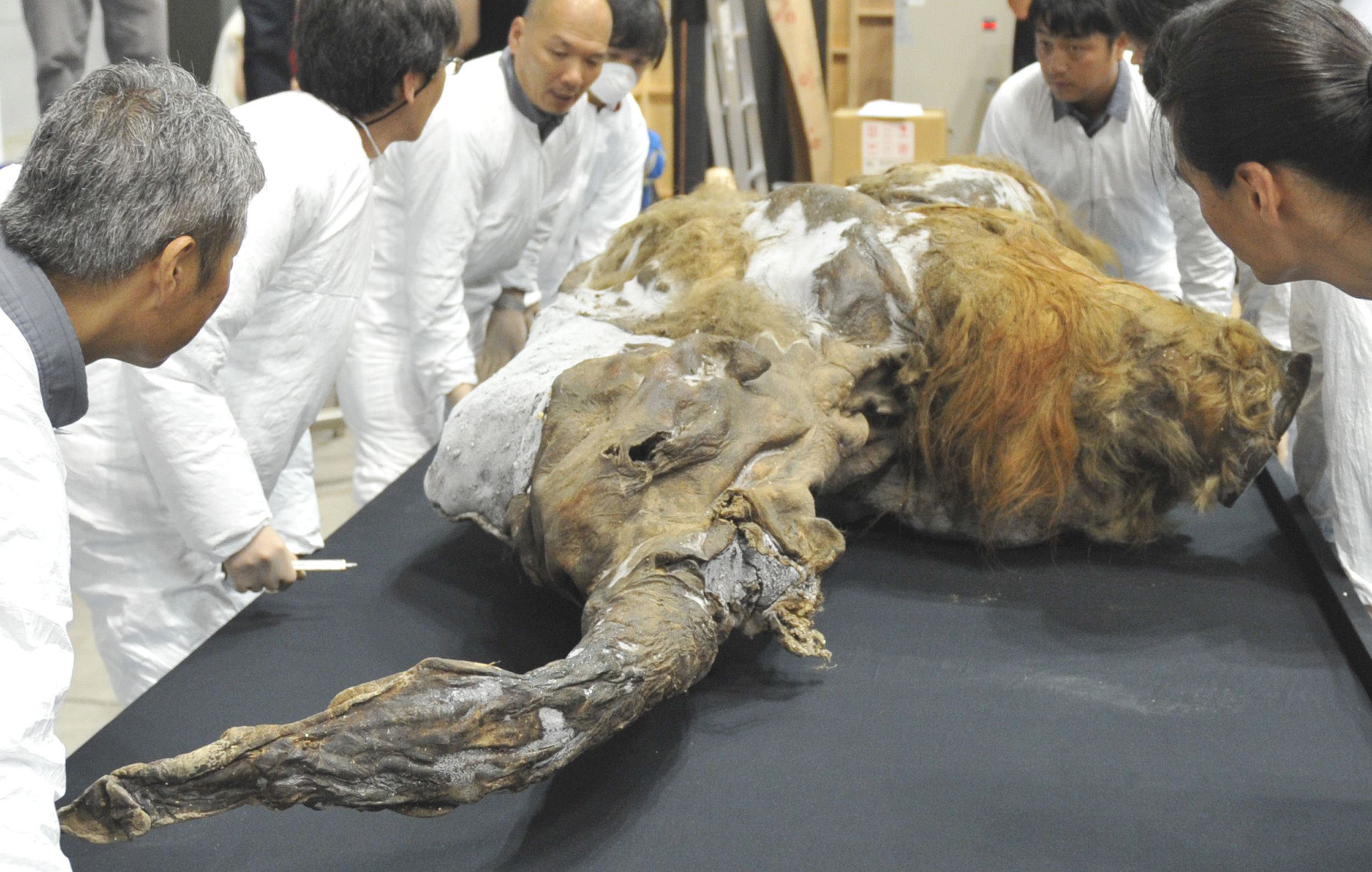
Stunning 3D chromosomes in frozen mammoths may help resurrect the beasts
The discovery of a remarkably well-preserved woolly mammoth in Siberia, dating back approximately 52,000 years, marked a significant breakthrough for Erez Lieberman Aiden and his research team.
The mammoth’s remarkably intact chestnut-brown hair suggested that the animal had remained frozen since its death, offering a rare opportunity to study its preserved tissues.
Upon closer inspection, scientists found hair follicles and chromatin—DNA and protein structures—preserved in a glasslike state, indicating that the molecular packing was extremely tight.
This preservation allowed the team to reconstruct the mammoth’s genome and analyze the 3D architecture of its chromosomes, which closely resembled that of modern elephants.

The study, led by Aiden, director of the Center for Genome Architecture at Baylor College of Medicine, and reported in the July 11 issue of Cell, revealed significant insights into the mammoth’s genetic makeup and gene activity.
The structural similarity between mammoth and elephant genomes offers valuable implications for efforts to resurrect extinct species.
Evolutionary geneticist Michael Hofreiter of the University of Potsdam, who was not involved in the study, sees this as a potential milestone that could advance research on extinct species.
Hendrik Poinar, an evolutionary geneticist at McMaster University, anticipates that future breakthroughs in chemistry may unlock even older fossils.
The researchers identified a novel preservation method called “chromoglass,” where desiccated tissues form a glassy structure that safeguards chromatin.
Marc Martí-Renom of the Spanish National Center for Genomic Analysis suggests that dehydration, rather than temperature, plays a crucial role in this preservation. Such conditions might also be found in other ancient remains, including Egyptian mummies.
A decade ago, Aiden and his colleagues, including Olga Dudchenko from BCM and Tom Gilbert from the University of Copenhagen, began developing “PaleoHi-C,” a technique to study ancient DNA in 3D.
This method, which extends beyond conventional DNA sequencing by maintaining the spatial structure of chromosomes, proved challenging with numerous failed attempts until they found success with the Siberian mammoth and another well-preserved specimen known as Yuka.
The study confirmed that woolly mammoths had 28 chromosomes, nearly identical to those of modern elephants.
This finding simplifies the task for biotech companies like Colossal Biosciences, which aims to integrate mammoth genes into elephant genomes to create a mammoth-like creature.
Understanding genome architecture also reveals which genes were active or inactive, with the team identifying changes in genes related to hair follicle development.
The researchers also tested their hypothesis about chromoglass by preserving dehydrated beef liver under various conditions. Their experiments confirmed that this preservation method effectively maintains chromatin structure even under extreme conditions.
While these findings are groundbreaking, the discovery of similar preservation in other ancient specimens remains elusive. Further research into different tissues is needed to advance de-extinction efforts.
The broader scientific community remains cautious, with Hofreiter questioning whether this study represents a significant advance or merely an intriguing anomaly.
However, Poinar is optimistic that as permafrost continues to thaw, more viable samples will emerge, potentially bringing the prospect of hearing the mammoth’s roar a step closer.








